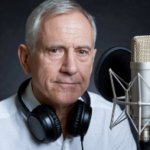Key Takeaways
- Importance of Lip Sync: Lip sync accuracy is crucial in Brazilian Portuguese dubbing for maintaining viewer immersion and storytelling integrity.
- Cultural Nuances Matter: Successful adaptations require voice actors to understand and convey cultural differences, ensuring emotional resonance aligns with visual cues.
- Technical Challenges Exist: Disparities in recording techniques and equipment can lead to lip sync issues, highlighting the need for high-quality production standards.
- Impact on Viewer Engagement: Mismatched dialogues disrupt audience engagement, making it essential for voice talent to synchronize performances closely with character movements.
- Successful Dubbing Examples: Analyzing effective dubs demonstrates how skilled voice artists enhance viewing experiences, while poor examples reveal the consequences of inadequate synchronization.
- Training and Technology Solutions: Investing in advanced technology and comprehensive training for voice actors can significantly improve lip sync quality and overall viewer satisfaction.
Have you ever watched a dubbed show and felt something just didn’t match up? Lip sync issues in Brazilian Portuguese dubbing can be frustrating, pulling you out of the story and leaving you wondering why it happens. As more international content floods streaming platforms, understanding these challenges becomes essential for both viewers and creators.
Overview of Brazilian Portuguese Dubbing
Brazilian Portuguese dubbing plays a crucial role in making international content accessible to viewers. The process involves adapting original audio into Brazilian Portuguese, ensuring that voice actors match the characters’ emotions and intentions. However, achieving perfect lip sync can be challenging.
Voice talent selection significantly impacts the quality of dubbing. Skilled voice artists bring characters to life, but if their performances don’t align with the visual cues, discrepancies arise. These inconsistencies disrupt viewer immersion and can lead to frustration.
Voice over techniques vary widely among projects. Some productions prioritize fidelity to the original script, while others focus on cultural adaptation for local audiences. Finding balance is essential; otherwise, lip sync issues may overshadow storytelling.
The demand for high-quality Brazilian Portuguese dubbing continues to grow as streaming platforms expand their libraries. As you explore options for your project, consider how effective voice over choices can enhance overall viewer experience and satisfaction. Understanding these elements can help you make informed decisions when selecting voice over talent for your next venture.
Common Challenges in Lip Syncing
Lip sync discrepancies pose significant challenges in Brazilian Portuguese dubbing. These issues often disrupt the viewer’s experience and highlight the complexities involved in creating a seamless adaptation of international content.
Cultural Nuances
Cultural nuances play a vital role in lip syncing. The rhythm, intonation, and emotional delivery of lines can vary widely between languages. When adapting scripts for Brazilian Portuguese, voice actors must convey not only the original meaning but also the cultural context behind it. This challenge becomes evident when translating idiomatic expressions or humor that may not have direct equivalents in Portuguese. As a result, achieving natural-sounding dialogue while maintaining synchronization with on-screen movements requires skilled voice talent who understand these subtleties.
Technical Limitations
Technical limitations further complicate lip syncing efforts. Different projects may employ various recording techniques and equipment quality, leading to inconsistencies. Additionally, timing adjustments during post-production can impact how well voiceovers align with mouth movements on screen. Voice artists must adapt their performances to match these constraints while ensuring clarity and engagement for viewers. The combination of these factors creates a landscape where perfect lip sync is often elusive but essential for an immersive viewing experience.
By addressing both cultural nuances and technical limitations, the dubbing process can enhance overall viewer satisfaction and bridge gaps between original content and its adaptations.
Impact on Audience Experience
Lip sync issues in Brazilian Portuguese dubbing significantly affect audience experience. Discrepancies between dialogue and on-screen movements can lead to frustration, causing viewers to disengage from the content.
Viewer Engagement
Viewer engagement drops when lip sync doesn’t align well with the visuals. You might find yourself distracted by mismatched timing or awkward pauses, which disrupts immersion. When voice actors don’t match their performances to the characters’ mouth movements, it breaks the connection you establish with the story. Engaging voiceovers require precise synchronization; otherwise, you’re left feeling detached.
Emotional Resonance
Emotional resonance suffers when lip sync falls short of expectations. The impact of a powerful scene diminishes if voice delivery doesn’t match character emotions or actions. A skilled voice actor captures nuances that resonate with audiences, but if their delivery is out of sync, those emotions get lost in translation. You want to feel what characters go through—when sound and visuals align perfectly, that emotional connection deepens your viewing experience.
By addressing these aspects of viewer engagement and emotional resonance during dubbing, studios can enhance overall satisfaction with Brazilian Portuguese adaptations.
Notable Examples and Case Studies
Analyzing specific cases highlights the diverse experiences with lip sync issues in Brazilian Portuguese dubbing.
Successful Dubs
Successful dubs showcase how effective voice actors can enhance the viewing experience without disrupting the original content’s integrity. For instance, some animated series have achieved a seamless blend of visuals and dialogue, allowing viewers to fully immerse themselves in the story. The careful selection of voice talent plays a crucial role here. Voice artists who understand cultural nuances often deliver performances that resonate emotionally, matching character expressions and actions perfectly.
Certain popular films also stand out as examples of excellent dubbing. In these projects, thorough attention to timing and pacing ensures that each line aligns well with mouth movements on-screen. This meticulous approach not only maintains viewer engagement but also elevates the overall storytelling experience in Brazilian Portuguese.
Dubs with Significant Lip Sync Issues
Conversely, many dubs face significant lip sync challenges that detract from audience enjoyment. These issues typically arise when voice over talent doesn’t match their delivery with on-screen emotions or timing correctly. A common scenario involves action sequences where fast-paced dialogue fails to align with character movements; this misalignment disrupts immersion and leads to viewer frustration.
Moreover, some dramas struggle due to inadequate cultural adaptations by voice actors. When tone or emotional depth doesn’t reflect the original performance, it diminishes impact during critical scenes—leaving audiences feeling disconnected from characters’ journeys.
Examining both successful dubs and those plagued by lip sync problems underscores the importance of skilled voice over professionals who can navigate these complexities effectively while enhancing viewer satisfaction through their work.
Solutions and Best Practices
Addressing lip sync issues in Brazilian Portuguese dubbing involves a blend of advanced technology and skilled voice talent. Implementing effective strategies can significantly enhance the viewer’s experience.
Advanced Technology
Utilizing cutting-edge technology plays a crucial role in achieving better lip sync accuracy. Software tools designed for precise audio alignment can help synchronize dialogue with on-screen movements seamlessly. These tools enable post-production teams to make real-time adjustments, ensuring that voiceovers match character actions more closely. Additionally, employing high-quality recording equipment minimizes discrepancies caused by technical limitations, enhancing overall sound clarity and consistency.
Innovative techniques like machine learning algorithms also assist in analyzing timing and pacing patterns from successful dubs. By examining these patterns, professionals can identify what works best for specific genres or styles, leading to improved adaptations in future projects. Embracing these technological advancements not only improves the quality of dubbing but also increases viewer satisfaction.
Training for Voice Actors
Training voice actors is essential for delivering performances that resonate with audiences while maintaining lip sync integrity. Providing comprehensive workshops focused on cultural nuances equips voice artists with the skills needed to navigate emotional delivery effectively. Understanding rhythm and intonation differences between languages enables them to convey original meanings accurately while adapting content culturally.
Regular practice sessions focusing on timing can refine their ability to deliver lines that align perfectly with visuals. Encouraging collaboration among voice talents fosters a sense of community where they can share techniques and learn from one another’s experiences. This approach cultivates an environment of continuous improvement, ultimately benefiting both the actors and the viewing audience.
Investing time into training ensures that your selected voiceover artists are prepared to tackle any challenges presented by diverse content types—whether it be animated series or live-action films—resulting in higher-quality dubbings that engage viewers effectively.
Conclusion
Lip sync issues in Brazilian Portuguese dubbing can significantly impact your viewing experience. When dialogue doesn’t align with character movements or emotional cues it can lead to frustration and disengagement. As international content continues to expand on streaming platforms it’s crucial for the dubbing industry to address these challenges.
By embracing advanced technology and investing in voice actor training you can help enhance the quality of adaptations. This commitment not only improves lip sync accuracy but also ensures that cultural nuances are preserved. Ultimately, striving for better dubbing practices will create a more immersive experience for you as a viewer, allowing you to fully enjoy the stories being told across different languages.
Frequently Asked Questions
What are common frustrations with Brazilian Portuguese dubbing?
Viewers often experience lip sync issues that disrupt the flow of shows and movies. Misalignment between dialogue and visuals can lead to frustration, making it hard for audiences to engage fully with the content.
Why is achieving perfect lip sync challenging in dubbing?
Perfect lip sync is difficult due to variations in voice talent selection, differing voice-over techniques, and cultural nuances. Each language has its rhythm and intonation, which complicates aligning audio with visual elements effectively.
How do cultural nuances affect dubbing quality?
Cultural nuances influence how lines are delivered in terms of emotion, timing, and context. Voice actors must convey both the original meaning and adapt culturally to ensure viewers connect emotionally with the characters.
What technical limitations impact lip syncing in dubbing?
Technical challenges include varying recording equipment quality and different recording techniques. These factors can lead to inconsistencies during post-production when adjusting timings for voiceovers against on-screen movements.
How do lip sync issues affect audience experience?
Lip sync discrepancies can break immersion, causing viewers to feel detached from the story. When emotional delivery doesn’t match character actions or feelings, it diminishes the impact of powerful scenes.
What are some examples of successful vs. unsuccessful dubs?
Successful dubs effectively blend visuals and dialogue through skilled voice acting, especially in animated series where timing matters. In contrast, unsuccessful dubs often feature misaligned dialogue during action sequences or fail at cultural adaptation.
What solutions exist for improving lip sync accuracy?
To enhance lip sync accuracy, using advanced technology like precise audio alignment software is essential. Additionally, training workshops for voice actors focused on cultural understanding can significantly improve performance quality.
How important is collaboration among voice talents in dubbing?
Collaboration fosters a community dedicated to continuous improvement in dubbing quality. By working together and sharing insights on effective practices, voice talents can elevate viewer engagement through better adaptations.







